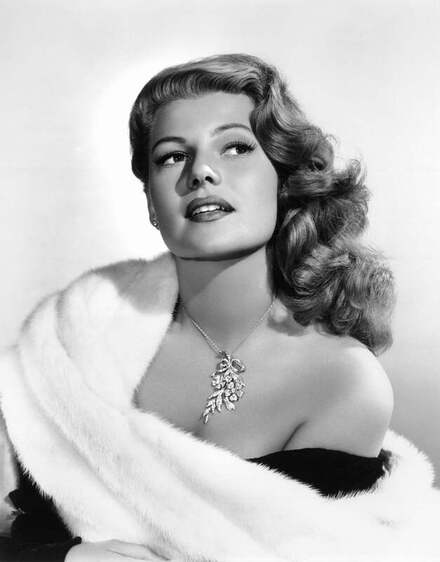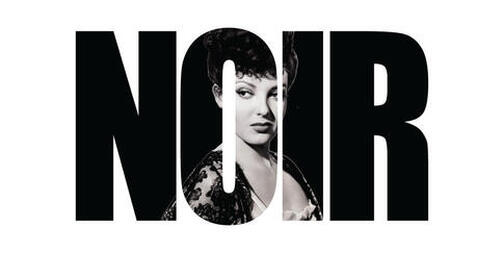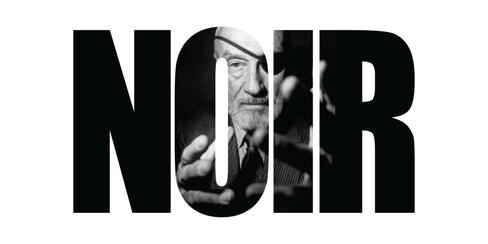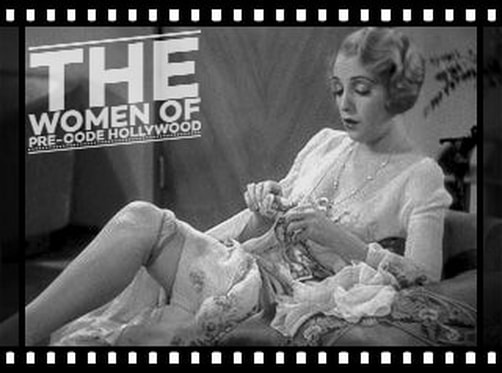RITA HAYWORTH
AND FILM NOIR
Rita Hayworth, born Margarita Carmen Cansino on October 17, 1918, in Brooklyn, New York, made a significant contribution to the film noir genre during the 1940s and 1950s. Although she was primarily known as a glamorous star and sex symbol, Hayworth demonstrated her versatility as an actress by taking on complex and compelling roles in several notable film noir productions.
Hayworth's breakthrough role in film noir came with her portrayal of Gilda Mundson Farrell in the 1946 film "Gilda." Directed by Charles Vidor, "Gilda" is considered one of the quintessential film noir classics. Hayworth's performance as the seductive and enigmatic femme fatale Gilda showcased her talent for both dramatic acting and her innate sensuality.
In "Gilda," Hayworth's character becomes entangled in a complex love triangle with her ex-lover Johnny Farrell (played by Glenn Ford) and her husband, Ballin Mundson (played by George Macready). Through her mesmerizing performance, Hayworth brought depth and complexity to Gilda, a woman caught in a web of deceit, desire, and manipulation.
Hayworth's iconic "Put the Blame on Mame" musical number in "Gilda" remains one of her most memorable and celebrated performances. The scene perfectly captured the essence of her allure and contributed to the film's enduring legacy.
Following the success of "Gilda," Hayworth continued to make notable contributions to film noir. In 1947, she starred in "The Lady from Shanghai," directed by her then-husband Orson Welles. Hayworth played Elsa Bannister, a complex and dangerous femme fatale. Despite the film's initial mixed critical reception, it has gained recognition as a classic example of the genre, and Hayworth's performance has been widely praised.
Hayworth's ability to embody both vulnerability and allure made her an ideal fit for the film noir genre. Her screen presence, beauty, and talent allowed her to bring a certain complexity and depth to her characters, often blurring the lines between victim and manipulator.
While Rita Hayworth is best known for her work in film noir, she had a prolific career that extended beyond the genre. She starred in numerous other films, including musicals and dramas, and became one of the biggest stars of her time. Her contribution to film noir, however, remains a significant part of her legacy, as she helped define and shape the archetype of the femme fatale through her captivating performances in films like "Gilda" and "The Lady from Shanghai."
Hayworth's breakthrough role in film noir came with her portrayal of Gilda Mundson Farrell in the 1946 film "Gilda." Directed by Charles Vidor, "Gilda" is considered one of the quintessential film noir classics. Hayworth's performance as the seductive and enigmatic femme fatale Gilda showcased her talent for both dramatic acting and her innate sensuality.
In "Gilda," Hayworth's character becomes entangled in a complex love triangle with her ex-lover Johnny Farrell (played by Glenn Ford) and her husband, Ballin Mundson (played by George Macready). Through her mesmerizing performance, Hayworth brought depth and complexity to Gilda, a woman caught in a web of deceit, desire, and manipulation.
Hayworth's iconic "Put the Blame on Mame" musical number in "Gilda" remains one of her most memorable and celebrated performances. The scene perfectly captured the essence of her allure and contributed to the film's enduring legacy.
Following the success of "Gilda," Hayworth continued to make notable contributions to film noir. In 1947, she starred in "The Lady from Shanghai," directed by her then-husband Orson Welles. Hayworth played Elsa Bannister, a complex and dangerous femme fatale. Despite the film's initial mixed critical reception, it has gained recognition as a classic example of the genre, and Hayworth's performance has been widely praised.
Hayworth's ability to embody both vulnerability and allure made her an ideal fit for the film noir genre. Her screen presence, beauty, and talent allowed her to bring a certain complexity and depth to her characters, often blurring the lines between victim and manipulator.
While Rita Hayworth is best known for her work in film noir, she had a prolific career that extended beyond the genre. She starred in numerous other films, including musicals and dramas, and became one of the biggest stars of her time. Her contribution to film noir, however, remains a significant part of her legacy, as she helped define and shape the archetype of the femme fatale through her captivating performances in films like "Gilda" and "The Lady from Shanghai."
AVAILABLE FILMS:
AFFAIR IN TRINIDAD (1952)
ANGELS OVER BROADWAY (1940)
BLOOD AND SAND (1941)
CHARLIE CHAN IN EGYPT (1935)
DANTE'S INFERNO (1935)
GILDA (1946)
LADY FROM SHANGHAI, THE (1948)
LADY IN QUESTION, THE (1940)
LONE WOLF SPY HUNT, THE (1939)
MEET NERO WOLFE (1936)
ONLY ANGELS HAVE WINGS (1939)
SUSAN AND GOD (1940)
TALES OF MANHATTAN (1942)
ANGELS OVER BROADWAY (1940)
BLOOD AND SAND (1941)
CHARLIE CHAN IN EGYPT (1935)
DANTE'S INFERNO (1935)
GILDA (1946)
LADY FROM SHANGHAI, THE (1948)
LADY IN QUESTION, THE (1940)
LONE WOLF SPY HUNT, THE (1939)
MEET NERO WOLFE (1936)
ONLY ANGELS HAVE WINGS (1939)
SUSAN AND GOD (1940)
TALES OF MANHATTAN (1942)
VIDEO TRIBUTE:
Rita Hayworth

Rita Hayworth, born Margarita Carmen Cansino on October 17, 1918, in Brooklyn, New York, was an iconic American actress and dancer. She rose to prominence in the 1940s and became one of Hollywood's most beloved and glamorous stars.
Hayworth's career began in the early 1930s when she was signed by Fox Film Corporation (later 20th Century Fox) as a contract player. However, it was not until she signed with Columbia Pictures and changed her name to Rita Hayworth that her career truly took off. Under the guidance of Columbia's studio head, Harry Cohn, Hayworth's image was carefully crafted, and she underwent a transformation that would solidify her status as a sex symbol and screen goddess.
During the 1940s, Hayworth starred in several successful films, showcasing her talent as a versatile actress. She demonstrated her exceptional dancing skills in musicals like "You'll Never Get Rich" (1941) and "Cover Girl" (1944). However, it was her foray into film noir that allowed her to showcase a different side of her acting abilities.
Hayworth's notable contributions to the film noir genre included her iconic performances in "Gilda" (1946) and "The Lady from Shanghai" (1947). In "Gilda," she played the seductive and enigmatic femme fatale, while in "The Lady from Shanghai," directed by her then-husband Orson Welles, she portrayed a complex and dangerous character. These roles allowed Hayworth to break away from her glamorous image and demonstrate her versatility as an actress.
Outside of film noir, Hayworth starred in numerous other films, including romantic comedies, dramas, and musicals. Some of her notable works include "Pal Joey" (1957), "Separate Tables" (1958), and "They Came to Cordura" (1959).
Hayworth's personal life often made headlines as well. She was married multiple times, with her most high-profile marriages being to Orson Welles and Prince Aly Khan. Her tumultuous relationships and personal struggles added to her public fascination.
In the 1950s, Hayworth's career began to decline, partly due to personal issues and health problems. She continued to make occasional film appearances, but her prominence in Hollywood diminished over time. She retired from acting in the late 1970s.
Rita Hayworth's beauty, charm, and talent made her one of the most celebrated actresses of her time. Her contributions to film, both in the realm of film noir and other genres, have left an indelible mark on the history of cinema. She remains an enduring Hollywood icon and continues to be remembered as one of the greatest stars of the classic era.
Rita Hayworth passed away on May 14, 1987, at the age of 68, leaving behind a legacy as one of the most iconic and beloved actresses in film history.
Hayworth's career began in the early 1930s when she was signed by Fox Film Corporation (later 20th Century Fox) as a contract player. However, it was not until she signed with Columbia Pictures and changed her name to Rita Hayworth that her career truly took off. Under the guidance of Columbia's studio head, Harry Cohn, Hayworth's image was carefully crafted, and she underwent a transformation that would solidify her status as a sex symbol and screen goddess.
During the 1940s, Hayworth starred in several successful films, showcasing her talent as a versatile actress. She demonstrated her exceptional dancing skills in musicals like "You'll Never Get Rich" (1941) and "Cover Girl" (1944). However, it was her foray into film noir that allowed her to showcase a different side of her acting abilities.
Hayworth's notable contributions to the film noir genre included her iconic performances in "Gilda" (1946) and "The Lady from Shanghai" (1947). In "Gilda," she played the seductive and enigmatic femme fatale, while in "The Lady from Shanghai," directed by her then-husband Orson Welles, she portrayed a complex and dangerous character. These roles allowed Hayworth to break away from her glamorous image and demonstrate her versatility as an actress.
Outside of film noir, Hayworth starred in numerous other films, including romantic comedies, dramas, and musicals. Some of her notable works include "Pal Joey" (1957), "Separate Tables" (1958), and "They Came to Cordura" (1959).
Hayworth's personal life often made headlines as well. She was married multiple times, with her most high-profile marriages being to Orson Welles and Prince Aly Khan. Her tumultuous relationships and personal struggles added to her public fascination.
In the 1950s, Hayworth's career began to decline, partly due to personal issues and health problems. She continued to make occasional film appearances, but her prominence in Hollywood diminished over time. She retired from acting in the late 1970s.
Rita Hayworth's beauty, charm, and talent made her one of the most celebrated actresses of her time. Her contributions to film, both in the realm of film noir and other genres, have left an indelible mark on the history of cinema. She remains an enduring Hollywood icon and continues to be remembered as one of the greatest stars of the classic era.
Rita Hayworth passed away on May 14, 1987, at the age of 68, leaving behind a legacy as one of the most iconic and beloved actresses in film history.
Quotes:
[when asked what had held up her dress in Gilda (1946)] "Two things."
"I never really thought of myself as a sex goddess; I felt I was more a comedian who could dance."
"What surprises me in life are not the marriages that fail, but the marriages that succeed."
"I think all women have a certain elegance about them which is destroyed when they take off their clothes."
[on why she divorced Orson Welles] "I can't take his genius any more."
"I like having my picture taken and being a glamorous person. Sometimes when I find myself getting impatient, I just remember the times I cried my eyes out because nobody wanted to take my picture at the Trocadero."
"Old age - that's when a woman takes Vitamins A through G, and still looks like H."
- Rita Hayworth
Trivia:
Director Rouben Mamoulian said of her to "Vogue", "On the screen, if an actor can move, he needs little else for a successful career. Hayworth moved better than anyone else I have ever seen in film. The camera responded to her movement as it did to Garbo's intelligence and Chaplin's mime."
Knocked out two of Glenn Ford's teeth during their fight in Gilda (1946).
She was the producers' first choice for Casablanca (1942), but they couldn't get her and were fortunate to settle for Ingrid Bergman.
In the early 1940s, she replaced Jean Arthur as the top female star at Columbia Pictures. Coincidentally, the two stars share the same birthday (October 17).
Fred Astaire recalled how gifted and quick she was in learning the most advanced routines-often learning the steps in the morning, mulling over them during lunch, and after lunch performing the dance without a single mistake.
She appeared in five movies with classic leading actor Glenn Ford: Affair in Trinidad (1952), The Lady in Question (1940), The Loves of Carmen (1948), The Money Trap (1965) and Gilda (1946).
Knocked out two of Glenn Ford's teeth during their fight in Gilda (1946).
She was the producers' first choice for Casablanca (1942), but they couldn't get her and were fortunate to settle for Ingrid Bergman.
In the early 1940s, she replaced Jean Arthur as the top female star at Columbia Pictures. Coincidentally, the two stars share the same birthday (October 17).
Fred Astaire recalled how gifted and quick she was in learning the most advanced routines-often learning the steps in the morning, mulling over them during lunch, and after lunch performing the dance without a single mistake.
She appeared in five movies with classic leading actor Glenn Ford: Affair in Trinidad (1952), The Lady in Question (1940), The Loves of Carmen (1948), The Money Trap (1965) and Gilda (1946).




